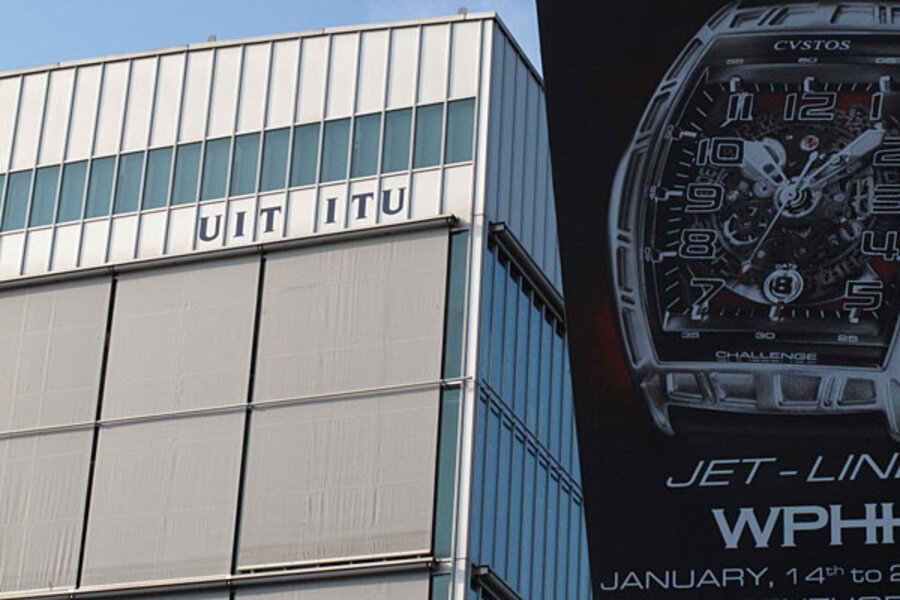Will Earth no longer define time? Leap second could be abolished.
Loading...
After millenniums as humanity's timekeeper, Earth may be about to get a pink slip.
Delegates to the International Telecommunication Union's Radiocommunication Assembly are slated to vote as early as Thursday on a proposal to scrap the leap second – an occasional tweak to atomic clocks designed to sync them with time defined by Earth's rotation.
A "yes" vote, which many expect, would leave atomic clocks as the sole international standard for determining the length of a second, and by extension, a day. For the first time in human history, the length of a day would be uncoupled from Earth's day-night cycle.
The leap second has been used since 1972 to adjust for a long-term slowdown in Earth's rotation. The slowdown is inevitable, but the pace is irregular.
Advocates for the change argue that leap seconds require fiddling with atomic clocks at these irregular intervals, raising the prospect that human error could crash large-scale computer networks, cell-phone systems, and other vital pieces of today's high-tech infrastructure. They rely on highly precise timing to operate.
Critics counter that the leap-second system has worked well since 1972, when the parallel timekeeping process was adopted internationally. Moreover, they say, killing off the leap second merely kicks the need to adjust the clocks down the road, when the gap between the two approaches would be even wider.
Whatever the merits of the case, researchers trace the two-track timing system to its underlying problem: Until the advent of atomic clocks, "the length of a second was not well defined," says John Lowe, group leader for the time and frequency services division of the National Institute of Standards and Technology in Boulder, Colo.
At least in the US, all time was local until the late 1800s. People checked their watches against the time on Town Hall's clock, itself calibrated against local solar time with some tweaking to account for Earth's slightly elliptical orbit around the sun.
With transcontinental railroads came the concept of standard time and time zones. Yet that required a standard unit of time that would allow far-flung stations and conductors to synchronize clocks. That assignment was given to the second, which was defined as 1/86,400 of an average solar day.
As timekeeping grew more precise, however, it became clear that Earth's rotation wasn't constant, as previously assumed. Not only did it vary, but it was slowing.
By international agreement in 1972, solar time and atomic time have coexisted, with the periodic leap second added to atomic clocks to keep the two approaches in sync.
For astronomers, navigators, or those who map or study features of the Earth's crust, solar time as a recognized standard works well, says Geoff Chester, spokesman for the US Naval Observatory in Washington.
For these groups, "ideally you would like to keep leap seconds," he says. Losing the leap second "wouldn't shut them down, it would just make more work for them" as they corrected their timekeeping against an exclusively atomic-clock standard.
Meanwhile, losing the leap second would streamline work and could reduce the risk of outages for the telecommunications business or people who operate large-scale computer networks, which require precise timing to function, Mr. Chester adds.
Unlike the need for a leap day, which comes predictably every four years, the need to add or subtract a leap second comes randomly, with at most six months' warning.
This irregular pattern means humans must intervene to make the change.
"You risk breaking critical infrastructure every time you do a leap second," Chester says.
The swap of who tweaks their time and who doesn't isn't lost on Ken Seidelmann, former director of astrometry at the US Naval Observatory and now a professor at the University of Virginia at Charlottesville.
"Leap seconds are an inconvenience to the telecommunications people, but there are many other users of time who should be considered," he told the Associated Press.
In some ways, the break with the sun has been occurring for some time, adds NIST's Mr. Lowe. He notes that because of the development of time zones and daylight saving time, noon local time as the clock ticks rarely coincides with the sun reaching its highest point in the sky that day.
"We don't observe high noon as noon anymore anyway," he acknowledges.
Which probably would have suited Gary Cooper just fine.







